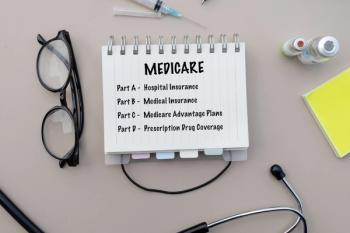
- Drug Topics January 2023
- Volume 167
- Issue 01
Is It Easy Being Green?
Pharmacists can make simple changes that add up to big environmental impacts.
Sustainability and the concept of going green have hit home with patients over the past decade as public attention has turned toward helping the environment and being responsible for one’s carbon footprint. That’s why many pharmacies have made a strong commitment to being environmentally conscious and showing their patients they are thinking sustainably.
Pharmacists can do their part for the environment by reducing waste and excess packaging, using less energy, and ensuring their pharmacy has a proper stock of product so local customers can pick up their prescriptions without needing to travel far from home. Tatyana Franklin, PharmD, who practices in Baton Rouge, Louisiana, noted that for those who run their own pharmacies and wish to do their part to save the planet, several cost-effective measures can be implemented.
“E-prescriptions should be sent directly to the pharmacy’s computer system rather than [sent] via fax machine,” she said. “Even though e-prescriptions may cost more, they ultimately save time and money by eliminating the need for paper prescriptions and the associated labor involved in typing and scanning them. Reduced transcription time means fewer opportunities for human mistakes.”
In fact, she suggested pharmacists limit printing as much as possible. “Medication guidelines should only be printed during the first prescription fill,” Franklin said. “To save waste, we shouldn’t print much more unless the patient specifically demands it. We provide patients with written information, but studies indicate they don’t read them. If the patient doesn’t require a receipt, don’t print one.”
Another great tip is to provide bags only when requested; offering a plastic bag is only necessary in cases where customers require one to carry bulky purchases or make a special request. “When you bring up being environmentally conscious, most [patients] will be grateful for the reminder and the chance to make even the smallest change,” Franklin said. “Create a simple notice to hang next to the register to let customers know that your pharmacy is taking steps to reduce its environmental impact by not using plastic bags.”
Additionally, using the smallest available vial or container size while filling prescriptions may help the pharmacy save money and contribute to the bigger cause. Patients will also welcome the reduced bulk and weight of their medicines.
Along with his wife Pam, Jonathan Marquess, PharmD, CDE, FAPhA, owns 15 community pharmacies in Georgia, and the couple has always tried to operate with a sustainability mindset. “I think it’s important that everyone does what they can to help,” he said. “One of the things we’ve done is no longer print out our e-prescriptions; it’s all done online. At first, I thought this was just a helpful thing to do, but it wound up saving us about $30 a month in not having to get as many pickups for trash. Plus, we’re saving thousands of reams of paper, ink cartridges, and toner.”
Additionally, the Marquesses only use Centaur biodegradable bottles at their pharmacies to limit landfill. Small, everyday changes like this are encouraged and appreciated.
Some pharmacies are thinking even bigger. Boyd Ennis, PharmD, owns and operates 4 pharmacies in Alabama. He installed solar panels on the roof of his store in Fairfield, Alabama, resulting in an approximately 50% drop in energy usage.
“I had talked about it for years and finally gave it a try, and it’s been really successful,” he said. “There were tax incentives that made it even more attractive to do. Based on the rebates, we’ll have a 2.8-year payout period. It just made a lot of sense.” In fact, things have worked out so well, he’s getting ready to install solar panels at a second location which will have net-zero greenhouse gas emissions.
Another change Ennis has made is installing smart thermostats in his pharmacies, allowing him to set and program the store temperature automatically and eliminating reliance on personnel to change the settings during off-hours. “I’ve also added smart plugs. We have drink products in the store. As long as you keep the door closed in your refrigerator, everything is fine. So after the store closes, they are set on timers [which] automatically turn the drink box off, and [it] comes back on an hour before the store opens so they are as cold as possible,” Ennis explained.
Six years ago, he installed light-emitting diode lights inside and outside all his pharmacies. “You can either cut costs or cut [staff],” Ennis explained. These eco-friendly changes “are not only good for the environment; they are a way to cut expenses,” he said. “It’s also cleaner, and I think that’s important to many [individuals]. We have made a commitment to reducing our carbon footprint, and we’re hoping that will help us reach more [individuals] and bring them in as well.”
Articles in this issue
almost 3 years ago
Recommended Immunization Schedules for 2023almost 3 years ago
Holistic Treatment Techniques for Managing Atopic Dermatitisalmost 3 years ago
Know Your Winter Respiratory Illnessalmost 3 years ago
For Pharmacists, Building Resilience and Well-Being Is Criticalalmost 3 years ago
FDA Approves Terlipressin for the Management of HRS-1almost 3 years ago
To Improve Retail Pharmacy, Look Beyond Figures and Dig Into FactsNewsletter
Pharmacy practice is always changing. Stay ahead of the curve with the Drug Topics newsletter and get the latest drug information, industry trends, and patient care tips.






































































































































